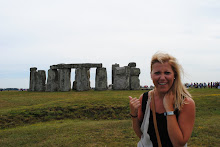Liana and I started the day with a tuk tuk ride to the so-called killing fields. I chatted with our driver, Chuk, and he told me about his life. That his grandfather and father were safe from the genocide because they were farmers deep in the countryside, but I think they were few of the very fortunate.
I'm not a history buff, so I apologize if I get any information wrong. It might even be useful to google the Cambodian genocide if you're looking for specifics. I can just give a cliff notes run down of what I learned about today.
The entire genocide was due in large part to one man, Pol Pot. I had heard the name before, but after today he will always be synonymous with evil.
Pol Pot was an educated man who studied in France and became a teacher in Cambodia. When he came into power, his reign of terror began. As I understood it, he believed those who worked in the fields, or the "old people" as they were referred, should thrive and lead. While city dwellers and educated people, also known as the "new people," were selfish and corrupt. After some time, the new people were driven out of the cities and killed.
From 1975 to 1979 (just about 3 years and 8 months), 3 million Cambodians were killed. 3 million out of a population of 8 million. That is the equivalent of 1 out of every 4 people being murdered. Think about the size of your family and put that into perspective.
Pol Pot became so paranoid and scared during the genocide that he began to kill everyone, including those who lived in the country. He kept murdering the educated and found reason to kill those who even "looked" smart, including people who wore glasses, spoke a second language or had soft hands.
It was so surreal to walk around the killing fields, surrounded by mass graves. Every once in a while you would look down and see a tooth or fragment of bone or even clothes that had come up from the rain. It was truly heartbreaking and horrifying.
While walking around the fields, you listened to an audio player that told back stories of prisoners and guards, as well as the tragic history of the field itself. For instance, there were a few mass graves marked where 450 victims had been found, another where 166 headless victims were found, one just for women and children.
The most disturbing part (though it was all horrific) in my opinion was the "killing tree." Here, soldiers would grab children and babies from off the ground and literally beat them against the tree and toss them into the grave alongside it. Sometimes the mother would witness the entire event, then she was murdered and put into the grave alongside her child.

This grave site was only one of thousands in Cambodia. I believe there were hundreds of execution camps, such as the one I visited, and thousands of mass graves. Some have been lost, some are too far in the jungle to find, some are surrounded by land mines. It's absolutely remarkable to see the collection of bones and cloth that were found from just one grave site. Think of all that has been left undiscovered. All those nameless victims that will never be unearthed.
After the killing fields, we visited a high school turned prison that now acts as a museum. We hired a tour guide to accompany us, a friendly woman who had been affected by the genocide. She walked us through the classrooms turned prison cells and told us her story. She had lost her husband but was reunited with her sister after many years. I admired her resiliency and amazingly unaffected view on life.
While in the museum, we saw torture rooms and prison cells virtually unchanged from when they were in use. Of the 30,000 or so people who went through, only 7 survived, one of which died only two weeks ago.

If you're wondering what happened to Pol Pot, he fled and lived out his life (I believe) in Thailand. He died in 1997 while under house arrest at the the age of 82, having seen his children and grandchildren grow up. Many other high ranking officials are still alive and awaiting trial.
To say this was a life changing experience is an understatement. I don't think I'll go on to change other people's lives, but my perspectives and priorities have certainly been set straight; I'm astonished how simple and easy my life has been. I feel so humbled and eternally grateful.
It was a bit strange to walk through the killing fields and realize how incredibly calm and peaceful it is. There is a lake that's actually quite beautiful near the graves. The birds were singing and there were so many butterflies in the high grass emerging from the place were so many were buried alive. I guess it's a small analogy of the rebuilding process Cambodia and its people are forced to go through. I admire them so much. To think, everyone has a mother, father, brother, sister, friend, friend of a friend, that has been affected by the genocide. Learning about something so tragic made life seem so fragile. I cherish it a bit more after today.



Jena that's wild! So sad...I was tearing up reading that, I can't imagine what it would be like actually being there! I wonder why I have never heard of this before? The holocaust is so well known, but isn't this like the same crazy thing?? Weird. That's awful!
ReplyDeleteBaybo